
All categories
Featured selections
Trade Assurance
Buyer Central
Help Center
Get the app
Become a supplier

(99 products available)





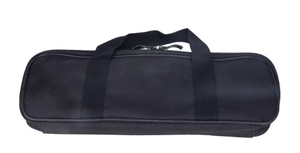

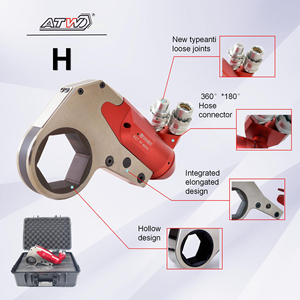





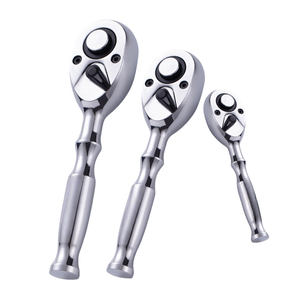







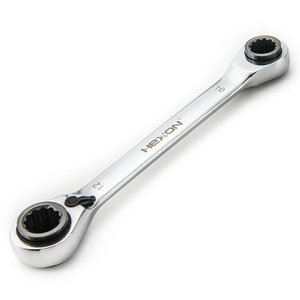















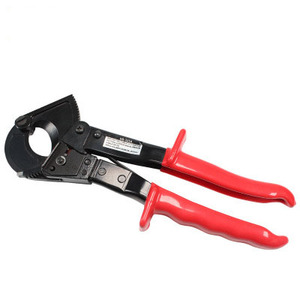
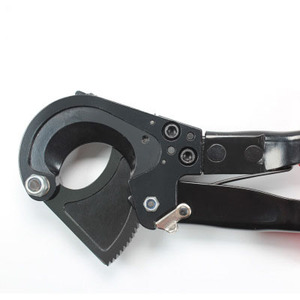

Ratcheting bolt cutters are manual tools that apply pressure through a ratcheting mechanism to cut heavy materials, such as metals, which would otherwise require cutting tools powered by either an electric motor or a hydraulic cylinder. They come in various types, influenced by the material to be cut, the power source, and many other factors.
Manual Ratcheting Bolt Cutters
They are the simplest type of ratcheting bolt cutters, with a purely manual operation relying on human force to cut through desired materials. A ratcheting mechanism is employed to enhance and transfer the user's strength to the cutting blades. Manual cutters are mainly used for light to medium cutting tasks, particularly when close control and precision are important. They are suitable for home users and professionals who have occasional cutting needs. Due to their simple construction and lack of power requirements, they are very easy and affordable.
Hydraulic Ratcheting Bolt Cutters
They use a hydraulic system to operate, greatly increasing cutting power, especially on thicker bolts or metal rods. While human or manual force is still involved, hydraulic ratcheting cutters are best where more cutting force is required. These cutters perform the best for industrial heavy-duty projects and construction where large quantities of materials require frequent cutting. Because of their complex hydraulic systems, hydraulic cutters are less frequent easy to operate but require maintenance.
Rechargeable Electric Ratcheting Bolt Cutters
Cordless electronic ratcheting bolt cutters, portable battery-operated gadgets, cutting bolts, and metal rods in an instant. These gadgets are ideal for job site use because they allow the user to move freely without regard to outlets. They are lightweight and easy to carry, feature a rechargeable battery, and have a low cut in minutes per operation. They are usually used in settings where there are a lot of cuts made immediately, automotive applications, and construction work. Compared to manual or hydraulic clamps, electric clamps are sometimes heavier, more costly, and require batteries or recharging.
Pneumatic Ratcheting Bolt Cutters
These cutters operate by air pressure, providing fast and powerful cuts. They are lightweight and portable and do not need a power supply. However, they do require an air compressor and are most commonly used in large industrial settings where many cuts are needed fast.
The right materials and durability of ratcheting bolt cutters should be addressed as they largely dictate how effective and sustainable the hardware will be regarding cutting high tensile strength materials such as bolts, nuts, or metal rods.
Blades and Cutting Edges
A bolt cutter's blades are mainly made of high-carbon steel or alloy steel. This is because high-carbon steel and alloy steel are highly impact and wear-resistant, which is crucial when cutting hard materials. In most cases, cutter blades are tempered and hardened to increase sharpness retention and decrease wear and tear. The best steel for durability and cutting-edge long-lasting ability is high-carbon and alloy steel. Steel blades are important in maintaining cutting edges for long periods under difficult cutting conditions. Steel blade maintenance is low; oiling, cleaning, and possibly sharpening occasionally will suffice.
Handles and Frame Construction
As for the handles and frames, the majority are constructed from steel or aluminum alloys, as these materials ensure the perfect balance between strength and lightweight features. High strength steel frames provide excellent strength and rigidity, while aluminum alloys provide lightweight features and good corrosion resistance. In terms of application, such a sturdy frame would withstand cutting forces without bending or breaking. A lighter material such as aluminum is therefore well suited for users to handle, as it will not create fatigue with constant cutting. In construction with precision or aerospace applications, aluminium-framed scissors are the most recommended due to their lightweight and robust qualities.
Corrosion Resistance
Resistance to corrosion is important for those cutter types to be employed in outdoor positions or under conditions of high humidity. In addition to this, many cutters' models include the handles and frames in the parts made of stainless steel or coated with weather-resistant materials. The phenomenon of corrosion is detrimental to the strength and effectiveness of the machinery; therefore, in such environments, the corrosion-resistant materials used in the production of the machinery will help prolong the cutter's life and maintain its functionality.
Quality of Joints and Mechanism
Other parts, like the ratcheting mechanism or part, also need to be made of durable materials, such as the surrounding aids. The main reason for this is that there is a lot of pressure exerted at the time of cutting, and any cutter's internal components mesh with the blades and are subjected to extreme forces. Premium steel alloys are often used for gears and mechanisms, as they provide good wear resistance and strength. A strong ratchet system increases durability. Weak or poor-quality ratcheting systems wear down or break under load, compromising the cut and causing frequent repair or replacement.
Ratcheting bolt cutters are handy tools that perform the task of cutting bolts and metal straps in construction, automotive, and manufacturing industries and are always welcome in many one business environment.
Construction Industry
In the construction sector, ratcheting bolt cutters are useful for cutting rebar, bolts, and metal straps, which are common in structural work. They are light, portable, and powerful; hence, they are most preferred when working with thick or hard materials. These cutters help reduce the time spent on cutting by giving precise cuts.
Manufacturing and Metal Fabrication
Cutters are extensively used in the metalworking field, especially when working with metals. Ratcheting bolt cutters make it easier to cut metal rods, wires, and other fasteners used in making metal products. They are vital tools for an industry that needs mass production, making precise and efficient cuts essential for quality equipment.
Automotive Repair and Maintenance
Ratcheting bolt cutters are very useful tools that can be used within the automotive industry, especially in large bolt cutting applications or exhaust system fasteners. Since electric or pneumatic models can be used in fieldwork or garage offices, they eliminate the need for manual work, which can be tedious, and the work is done faster.
Agriculture and Farm Operations
Fencing and machinery are used on farms and agribusiness. Ratcheting bolt cutters make it easy to quickly cut wire fencing, metal grids, and other agricultural hardware. That is why these cutters are important in this field: efficiency, durability, and the ability to cut through tough materials.
Electrical and Wiring Installations
High tension wires and channel metals are used in the electrical industry for wire management. Ratcheting bolt cutters help electricians make smooth cuts through cable trays, metal ladders, and threaded rods.
Shipbuilding and Marine Industry
The maritime industry involves working with a lot of metal. Ratcheting bolt cutters assist workers in shipbuilding with tasks, such as cutting large metal components, fasteners, and mooring equipment. Electric or pneumatic types are particularly useful in this industry since they can be used to cut thicker materials.
Acquiring a proper ratcheting cutter requires evaluating and understanding the following key criteria and considerations.
Cutting Capacity
Cutting capacity means the maximum thickness of the blade or material that the cutter can cut. Cutting capacity varies across different models of cutting blades; thus, choosing a model with the required cutting capacity for the cutting tasks is important. Tools that have higher cutting capacities are less likely to achieve overloading when engaging in heavy-duty tasks. Simply put, a cutter that carries a larger load is better suited for major tasks than one that carries a smaller load.
Blade Material and Construction
The material used in cutting blades mostly determines the durability and the cutting performance. High-carbon steel or alloy steel blades are the hardest and most durable and will stay sharper much longer than others. Look for blades that have been hardened or tempered to enhance their cutting edge and resist wear. Some cuts have a cutting-edge geometry designed into it that enhances its performance and lowers cutting effort. It is advisable to opt for quality blade material and geometry, increasing efficiency and efficacy and decreasing fatigue during operations.
Handle Design and Comfort
The design of the handle significantly affects the maneuverability, especially when working for longer periods. A good handle has a firm, anti-slip grip and has been designed to minimize the transfer of excessive vibrations. Also, look for handles with a ratcheting mechanism that engages easily. Only then shall one achieve effective cutting without cutting fatigue or discomfort. These considerations are especially important when the tool's frequent or extended usage demands precise cuts.
Power Source
There are manual, hydraulic, electric, and pneumatic ratcheting bolt cutters. Select a power source based on the intended application: manual cutters do light to medium duty; hydraulic and electric cutters are needed for heavy and repetitive cutting; pneumatic cutters are right for the experienced professional looking for the fastest production. Each power source category has its advantages and disadvantages: ease of use, cutting power, independence, and noise level. Choose according to convenience, the availability of resources, and the noise concern.
Portability and Weight
Weight and portability matter only when the cutter is to be used in various locations or needs to be carried. Lighter models, for instance, of bolt cutters, are conventional to haul around without incurring operator fatigue. On the other hand, while hydraulic and electric bolt cutters, by nature, are heavier and usually equipped with hoses or power cords, one must consider accessibility to the work area and availability of power sources. Battery-powered electric cutters balance both portability and cutting power. It enables one to cover a huge area without interruption, yet the machine's overall weight is manageable.
A1: Ranging from construction work to automotive and electrical work, manual cutters are suitable for small to medium-sized bolts and metals.
A2: Of electric and hydraulic models, hydraulic ratcheting bolt cutters provide superior cutting force for heavy and thick materials.
A3: Maintenance Requirements involve regular oiling, cleaning after each use, checking for wear, and covering it up to protect it from elements.
A4: Quick, repeated, and effective cuts for large production tasks are the major benefits of using pneumatic cutters.
A5: The cutting capacity, blade material, power source, and portability of the cutter were considered choosing the right tool.